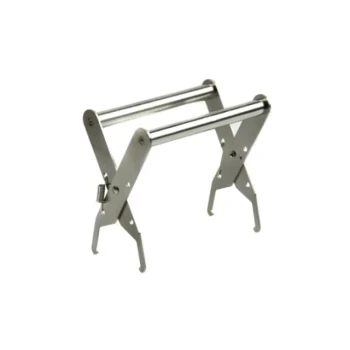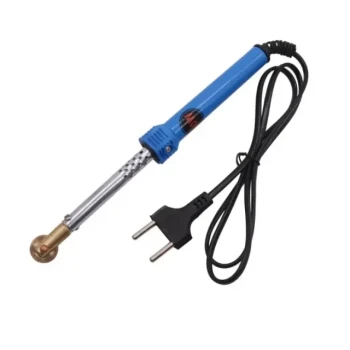To identify potential swarm preparations, a beekeeper must look for two primary indicators inside the hive: a lack of space for the queen to lay eggs and the presence of new queen cells. When the brood nest becomes completely filled with eggs, larvae, and food stores, and you begin to see peanut-shaped queen cells being drawn out—especially with eggs or royal jelly inside—the colony is giving a definitive signal that it intends to swarm.
Swarming is not a problem to be fixed, but a natural reproductive instinct to be managed. The key to identifying preparations is recognizing the signs of congestion that trigger this instinct long before the bees have made their final decision.

The Root Cause: A Thriving, Crowded Colony
Bees swarm when they feel they have outgrown their home. It is a sign of a healthy, strong colony that is ready to reproduce by splitting itself in two. Understanding this core driver is essential to interpreting what you see in the hive.
The "Brood Nest Bound" Signal
A primary trigger for swarming is when the queen runs out of room to lay eggs. If your inspection reveals frames that are wall-to-wall with honey, pollen, and capped brood, leaving very few empty polished cells, the colony is brood nest bound. This forces the bees to consider expansion through swarming.
The "Population Boom" Signal
A hive that is boiling over with bees is a prime candidate for swarming. This sheer density of bees, often called congestion, accelerates the consumption of resources and makes the queen's pheromones less effective at maintaining colony cohesion, further encouraging swarm preparations.
The Definitive Signs of Swarm Preparation
While a crowded hive sets the stage, the bees will give you very specific, unmistakable clues when they are actively preparing to leave.
From Queen Cups to Queen Cells
Worker bees create small, downward-facing "practice" cups, known as queen cups, throughout the year. These are normal and not a cause for alarm. However, once the bees decide to swarm, they will begin to enlarge these cups into full-sized queen cells, which look like unshelled peanuts hanging from the comb.
The Point of No Return: An Egg in the Cell
The most crucial sign is the presence of an egg or a larva floating in a bed of royal jelly inside one of these queen cells. This is called a "charged" queen cell. Once you see this, the biological clock for swarming has started. The old queen will likely leave with the swarm just before these new queen cells are capped.
Location, Location, Location
The placement of queen cells is also a critical clue. Cells built specifically for swarming are almost always found along the bottom edges or in the corners of the brood frames.
Common Pitfalls to Avoid
Correctly identifying swarm signs is vital, as misinterpretation can lead to counterproductive interventions. A beekeeper's primary challenge is distinguishing a swarm impulse from a different, though similar-looking, colony event.
Don't Confuse Swarm Cells with Supersedure Cells
Sometimes, bees decide to replace a failing or old queen without swarming. This is called supersedure. They will build queen cells for this purpose, but with key differences.
Supersedure cells are typically few in number (1-3) and are often located on the face of the comb, not necessarily at the bottom. Swarm cells, in contrast, are usually numerous (5-20+) and located along the frame bottoms. Mistaking supersedure for swarming and removing the only queen cells can leave your colony hopelessly queenless.
Timing Your Intervention
Simply seeing empty queen cups is not a reason to act. This is normal colony behavior. Action is only required once you see that the cells have been enlarged and, most importantly, contain an egg or larva. At that point, you have a limited window of about 7-9 days to intervene before the swarm departs.
Making the Right Choice for Your Goal
Your response to these signs should align with your beekeeping objectives.
- If your primary focus is preventing swarming and maximizing honey production: Your goal is to alleviate hive congestion before queen cells are started by providing more space, either by adding another brood box or honey super.
- If your primary focus is managing an active swarm preparation: Once you find charged queen cells, the best course of action is to perform a "split," creating a new colony with the old queen to satisfy the bees' reproductive urge on your own terms.
Ultimately, your regular hive inspections are about reading the story the bees are telling you and responding proactively to their needs.
Summary Table:
| Sign of Swarm Preparation | What to Look For | Why It Matters |
|---|---|---|
| Brood Nest Bound | Frames full of honey, pollen, and brood; few empty cells. | Queen has no room to lay eggs, triggering the swarm instinct. |
| Population Congestion | Hive is "boiling over" with bees; high density. | Congestion reduces queen pheromone effectiveness, encouraging swarming. |
| Queen Cells (Not Cups) | Peanut-shaped cells on bottom edges of frames, often numerous. | Indicates active preparation, not just practice. |
| Charged Queen Cell | An egg or larva in royal jelly inside a queen cell. | The point of no return; swarm is likely in 7-9 days. |
Equip Your Apiary with HONESTBEE
Managing swarms effectively requires the right tools and equipment. HONESTBEE supplies commercial apiaries and beekeeping equipment distributors with high-quality, durable beekeeping supplies through our wholesale-focused operations.
Whether you need equipment for making splits, adding supers, or conducting regular inspections, we provide the reliable gear that supports proactive colony management.
Ready to strengthen your beekeeping operation? Contact our team today to discuss your wholesale needs and discover how HONESTBEE can be your trusted partner in beekeeping success.
Visual Guide

Related Products
- Professional Dual-End Stainless Steel Hive Tool for Beekeeping
- Multi-Function Plier-Style Frame Grip Hive Tool
- Professional Stainless Steel Pry-Bar Hive Tool
- Plastic Queen Bee Catcher Marker Tube Holder for Queen Marking Bottle
- Professional Multi-Function Stainless Steel Hive Tool
People Also Ask
- What temperature is too cold to open a beehive? Protect Your Hive from Fatal Cold Shock
- Why is proper beekeeping equipment important? Essential for Safety and Hive Health
- What is a hive tool used for in beekeeping? Your Essential Guide to Hive Management
- What is a hive tool and what are its uses? Master Your Hive Inspections with the Essential Beekeeper's Tool
- How should beekeepers handle bees when using a hive tool? Master Calm, Deliberate Techniques



















